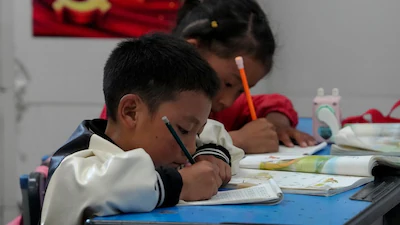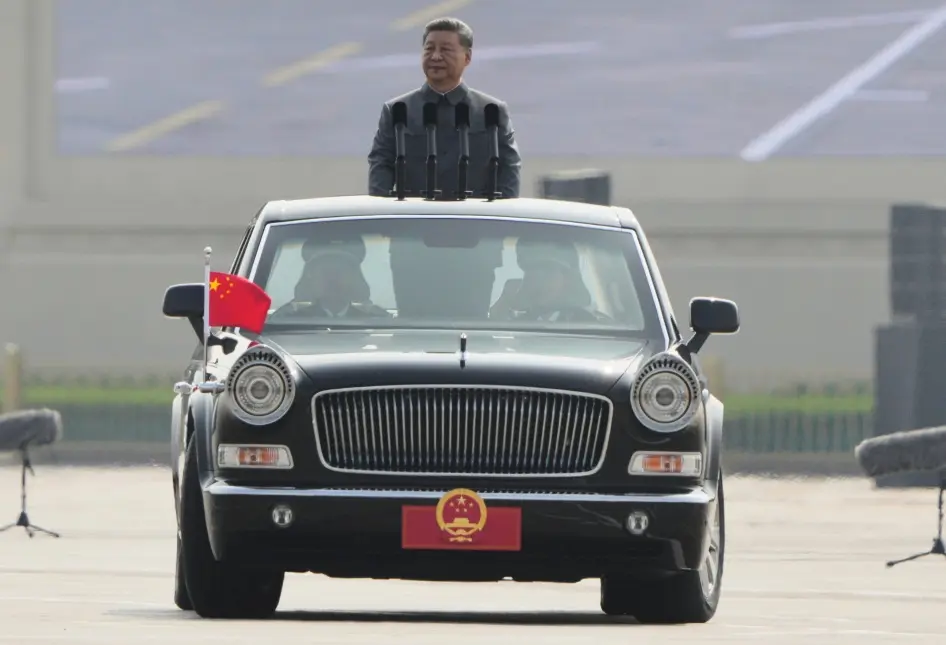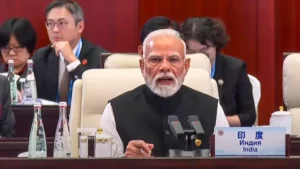China estimated to get 700 nuclear weapons by 2027
A year ago, China was estimated to have 200 nuclear weapons. Pentagon in its report gave an estimation of it getting double by the end of this decade, but unlikely of the Pentagon report China will have 700 war heads by 2027 and 1,000 by end of this decade.
The report reiterated the Pentagon’s concerns about China’s increasing its pressure on Taiwan
In its wide-ranging annual report to Congress on China’s military, the Pentagon did not say how many weapons China has now, but a year ago it said the number was in the “low 200s” and was likely to double by the end of this decade.
While the report’s new estimates would still be significantly smaller than the current US nuclear stockpile, they represent a significant change in the US projections.
The US has 3,750 nuclear weapons and has no plans to increase that.
As recently as 2003, the US total was about 10,000.
In the report, the Pentagon also reiterated concerns about increasing pressure on Taiwan, an island China sees as a breakaway province, and China’s chemical and biological programs and technological advancements.
It put particular emphasis on China’s growing nuclear arsenal.
“Over the next decade, the PRC aims to modernise, diversify, and expand its nuclear forces,” the report said, referring to the People’s Republic of China.
It added that China had started building at least three intercontinental ballistic missile silo fields.
Washington has repeatedly called on China to join it and Russia in a new arms control treaty.(Reuters: David Gray)
“Whether China follows through with these estimates from the United States will depend in great part on the policies and actions of the United States,” Daryl Kimball, executive director of the Arms Control Association, said.
“The potential for China to increase its arsenal to these levels underscores the urgent necessity of pragmatic bilateral or multilateral talks to reduce nuclear risks.”
China said its arsenal was dwarfed by those of the United States and Russia, and that it was ready for dialogue, but only if Washington reduced its nuclear stockpile to China’s level.
The annual report also claims China is “very likely already considering and planning for additional military bases and logistics facilities” beyond its existing presence in Djibouti.
Among the locations apparently being “considered” are numerous countries close to Australia, including Thailand, Singapore and Indonesia, as well as countries further afield such as Pakistan, Sri Lanka and the United Arab Emirates.
According to the Pentagon, “known focus areas of PLA planning are along the sea lines of communications from China to the Strait of Hormuz, Africa and the Pacific Islands”.
US top general weighs in on Taiwan
Beijing has vowed to bring fiercely democratic Taiwan, which it considers its “sacred territory”, under its rule and has not renounced the use of force.
The Pentagon report renewed concerns about China’s increasingly muscular military and its development of options to take Taiwan, one of several scenarios the US military cautioned Beijing could pursue.
However, a senior US defence official, who briefed reporters, declined to speculate about whether that scenario was likely or to say if they saw a near- or even a medium-term risk of armed conflict between Beijing and Taipei.
On the long list of potential Taiwan scenarios outlined in the briefing, the US official cited the possibility that China could work on options for everything from a joint blockade campaign against Taiwan to a full-scale amphibious invasion.
It could carry out air and missile strikes or cyber attacks.
China could also potentially seize offshore islands. The official declined to say which one of these contingencies was most likely or if any were likely at all.
However, the Pentagon has voiced concern about China’s pursuit of capabilities that would enable such actions.
“They have a range of different things that they are wanting to be prepared to do,” the official said.
Separately, the top US general said on Wednesday that China was unlikely to try to militarily seize Taiwan in the next couple of years.
“Based on my analysis of China, I don’t think that it is likely in the near future — being defined as, you know, six, 12, maybe 24 months, that kind of window,” General Mark Milley, chairman of the Joint Chiefs of Staff, said when asked if China was preparing to make a move on Taiwan in the near future.
The Pentagon report added a section on China’s biological weapons and potential dual use, but did not look at the origins of COVID-19.
There has been increased focus on China’s chemical and biological capabilities after COVID-19 was first identified in the central Chinese city of Wuhan in late 2019.
US intelligence agencies said last week they may never be able to identify the origins of the pandemic, as they released a detailed version of their review of whether the virus came from animal-to-human transmission or was leaked from a lab.
China has consistently denied allegations that the virus was leaked from a specialist laboratory in Wuhan.











